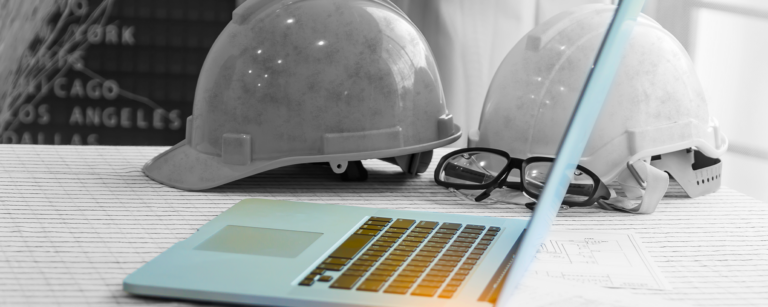Forecasting for Success with Today’s Best Project Tech
December 14, 2020
Are our construction projects on track? Is each phase being completed on time? Will we meet budget and profit estimates as scheduled? These are the kinds of questions every project manager has likely asked throughout the entire life cycle of virtually every build.
Through construction software with integrated cost and planning capabilities, you can start removing the guesswork and arrive at more dependable answers by using real data to help you gauge project progress and profitability against original estimates. While the forecasting process will not completely predict the success or failure of your construction projects, it can serve as an invaluable guide to inform your decision-making.
How can forecasting with the right tech work for you?
Helps avoid under- or over-estimating your bid
Creating cost estimates requires a delicate balance. On one hand, you don’t want to miscalculate costs that unintentionally over-inflate the estimate and therefore cost you the bid. With the majority of projects exceeding their budgets, clients may naturally be averse to anything that is perceived as “too high” from the beginning. On the other hand, you want to make sure the numbers are attractive enough that a client may award you the bid, but without you leaving money on the table.
So, you need accurate input to ride this fine line. Where to start? Look to the past to forecast for the future. Revisiting your similar construction projects to pull actual historical metrics can help establish benchmarks, and today’s best construction management software can make this happen for you. Just remember to adjust your metrics for what’s happening right now in the industry and in your geographic area to make sure your costs are accurate.
Once your project is underway, costs for the remaining work can be updated easily. Mobile apps that are integrated with cloud-based construction software can provide site managers and crews with the ability to relay – in real time – vital field data for material units used, labor hours, items installed, individual task completions and safety data to your project. Those numbers become a real-time running log of how costs and schedules are lining up against estimates you established at the beginning, allowing you to keep a finger on the future pulse of your project.
To further monitor your project’s financial health, revisit estimates regularly to make sure they are still current, and progress is on-target. Cost forecasts can be updated as information or conditions change, whether it’s material costs, hiring extra crafts people or performing unexpected rework.
Is an effective planning tool when creating risk scenarios against the forecasts
Our industry is often subject to unpredictable influences: public health crises, economic changes, natural disasters, disruptions to supply chains and so on. Knowing about them is good. Being able to do something about them is better.
Today’s forecasting tools take on a risk-management role in helping you plan for the unexpected. They help you identify potential risk scenarios, understand their impact on your project’s schedule and budget and create contingency plans that are ready to launch if and when needed.
So, when an unforeseen situation crops up, making informed decisions based on data and proactive forecasting will help you navigate through it carefully and more confidently.
“Pulls back the curtain” on trends or patterns that need correction before they impact the bottom line
Forecasting isn’t just about helping you understand what can happen in the future if things continue on their current trajectory, or about comparing progress against estimates. It’s also about uncovering trends or patterns that show if the project is going as anticipated or if there is something to address.
In the latter case, you could consider forecasting tools to be a warning system for possible change orders. And this is a good thing. Because it gives decision-makers ample opportunity to analyze the issue, arrive at a timely consensus on next steps and then course-correct if necessary. Even if it does result in a change order, having the chance to address it and mitigate its budget and timeline impacts sooner rather than later is definitely a win.
May be critical when taking on sizable, long-term projects
Major construction projects pack a lot between start and finish: larger budgets, longer schedules, more on-site crafts people and office employees, plus a lot more data.
Using the right forecasting technology can simplify a growing level of complexity for you by distilling vast amounts of data generated from larger projects into more easily understood visual formats, such as charts, graphs and diagrams. The main project points can then be analyzed at a glance for snapshots of where your project stands in relation to forecasts and projections, and actively monitored as they progress. This approach is especially helpful when you’re updating many stakeholders who have varying levels of involvement or investment in the build. Having this level of visibility into your data also empowers team members to collaborate on timely, strategic decisions throughout the project that can impact its success, and ultimately your ROI.
Improve your projects’ odds for success
Forecasting software is critical in helping account for all the relevant costs associated with a build, so nothing is left to chance, and money is not left on the table. Learn how InEight’s forecasting software can help you better plan your construction projects using real-world data — from beginning through completion — so you can meet budget and schedule milestones for more wins, more often.




